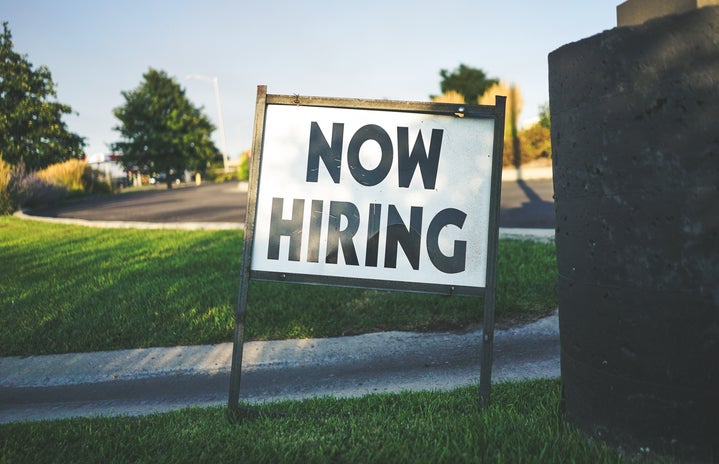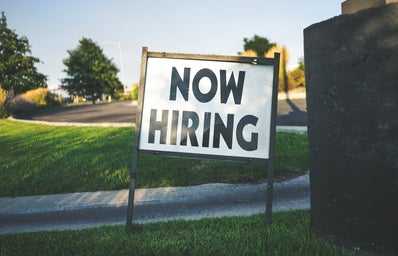Emails are, hands down, one of the most powerful professional tools we can use. They have the potential to jump start our careers and open doors to endless opportunities. The only catch, however, is whether or not we know how to use it.
At school we aren’t taught how to navigate our email, Jeff Giacobbe can only do so much. So, here’s your quick guide on the emails you should be sending and how to do so successfully.
The Cold Email
We’ll start off with, in my humble opinion, the most terrifying. A cold email is an email that’s sent on its own – it isn’t a reply to a previously sent email and is usually sent to individuals you’ve never corresponded with. So why send it? It’s probably the easiest way to build and expand your network. Found a professional in your desired field and wanna pick their brain about their experience? Send a cold email. Found a company on LinkedIn and wanna inquire about internship opportunities? Send a cold email. Fun fact: I landed my current internship through sending a cold email.
So, how do you send one? Just for you guys, I’ll reference Forbes and The Muse.
- Step 1: Find the right people and their contact information. Seems easy enough, right? For the highest chance of success, make sure you contact someone accessible. A CEO or another high-ranking executive may not be the easiest person to get a reply from, so start smaller. Sit down and spend some time sifting through profiles on LinkedIn to find the right person: someone accessible, experienced, and whom you’d want to learn from.
- Step 2: Draft that email. Be specific, concise, and make your ask small. Begin with introducing yourself then throw in tidbits of information like how you came across them, why you’re contacting them in the first place, and finally get to the ask. Here’s an example:
“I hope all is well. My name is Sabrina Araullo and I’m currently a Public Relations major at Montclair State University. I’ve gained an interest within the digital media industry and came across your LinkedIn profile while searching for companies and individuals whose experience I admire. I’d like to ask for your advice on entering the industry as a student and if there are any books or materials you’ve found to be particularly helpful.”
You can ask for advice, a specific question, or even ask to grab coffee one day to further discuss anything you want to ask them. Bottom line, a cold email shows initiative and once you put yourself out there, you expose yourself to amazing opportunities and connections. Oh, and don’t forget to thank them for their time either!
The Follow-Up Email
Do not, under any circumstances, forget this email. It can be used for when someone forgets to get back to you, after an encounter with someone new (or old), or after interviews. When you send an email that includes a question or request, understand that sometimes the individual receiving it may either forget or has limited time to answer. Is it their fault? Slightly. But if you forget to remind them, the fault is yours. Treat it as a friendly reminder.
Another time you should use this type of email is after meeting someone. Say you bump into someone you know (or don’t know) and strike up a conversation about your professional aspirations or even ask for advice on what to do with your life. Sending them a follow-up email mentioning how nice it was to meet them and thanking them for their time goes a long way. I recommend emailing them the next day and mentioning something specific about your encounter (like what you talked about) so they can remember you. Again, use this to build your network!
Use this email after an interview too! Ask who you can reach out to following your interview and send them a quick email asking about the position and if they want additional information or material. This will keep you under their radar and show your interest for the job.
A useful tip for when a reply is time-sensitive or urgent is to leave yourself a reminder to follow-up. Whether it’s a sticky note or reminder on your calendar app, it’s your responsibility to follow up with someone.
The Thank You Email
Honestly, this should be self-explanatory. Much like the follow-up email, sending a quick thank you goes a long way and makes you stand out from the crowd. You can use it for a multitude of reasons, but the bottom line is that it shows appreciation and helps foster your relationships with others.
The Checking-In Email
This email is a benefit for you and whoever you’re working for whether it be a teacher or employer. This type of email is pretty similar to a follow-up email, however, for the sake of this article, I’ll look at it as a way to benchmark your success. If you’re at an internship, this email can be very helpful in fostering a relationship with your boss as it shows both initiative and interest. It can be as easy as sending them a quick email a month after starting to check in with them regarding your performance, any advice they have, and how to do your job more effectively.
So, how do you send one? Here’s an example of one I sent to my manager (again with the polite intro):
“I hope all is well. As it’s been a month since I’ve started, I wanted to check-in with you regarding my performance, areas you suggest I work on, and any advice you have from experience with previous interns. Thanking you in advance and I look forward to hearing your feedback!”
Naturally, I sent this because I’m never content with what I’m doing. I always believe there’s room to grow and learn, so out of sheer curiosity I sent it. We ended up sitting down for half an hour and boy, did I learn a lot. It’s a little nerve-wracking asking for feedback because who likes highlighting their mistakes? But hey, mistakes are made so we can learn and things are only criticized on how to make them better.
Each of these emails are ways to help you grow into a lovely young professional. I’m by no means saying I have it perfectly down and my life completely together, but reaching out to those I work with and admire have helped me learn more in the past six months than I have six semesters worth of classes.

